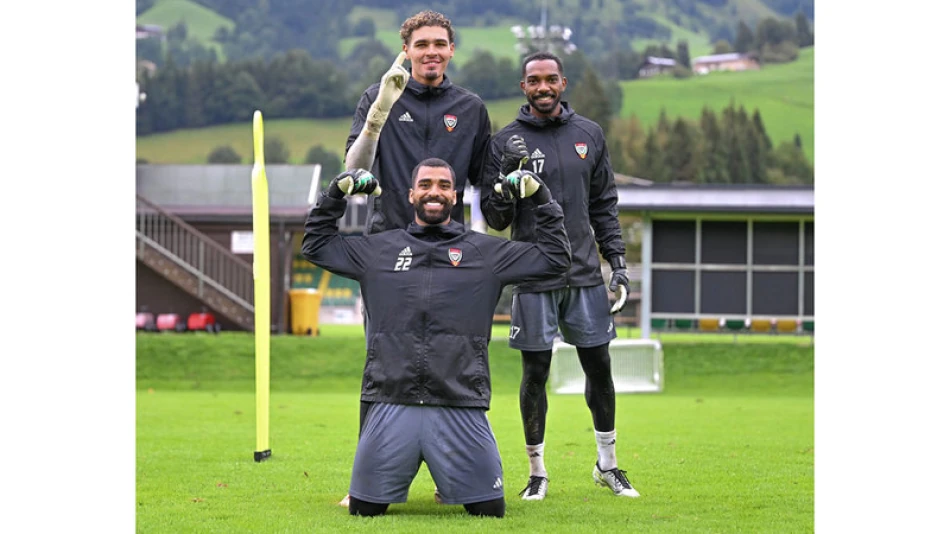
Zackaria Ahmed: White's Goalkeeping Stable, Issa and Khaseef Primed for Action
UAE's World Cup Dreams Rest on Experienced Goalkeeping Corps
As the UAE national football team prepares for crucial World Cup playoff matches against Oman and Qatar in October, goalkeeping coach Dr. Zakaria Ahmed has endorsed the current roster of keepers as the strongest available in Emirati football. With just two matches standing between the team and qualification for the 2026 World Cup, stability between the posts has become a strategic priority that could determine the nation's footballing future.
Experience Over Experimentation in Critical Moments
The UAE's goalkeeping selection reflects a pragmatic approach to high-stakes international football. Dr. Ahmed has identified four keepers in the current squad—Khaled Eisa, Ali Khasif, Hamad Al Maqbali, and Adli Mohammed—as the cream of the UAE Pro League crop. However, his emphasis on experience reveals the calculated risk management typical of World Cup qualifying campaigns.
Khaled Eisa of Al Ain and Ali Khasif of Al Jazira represent the veteran backbone, with Ahmed advocating for their continued prominence based on international match experience. This mirrors successful qualifying strategies employed by other Gulf nations, where consistency in goal often proves more valuable than raw talent during pressure moments.
Youth Development Balanced with Immediate Needs
While Ahmed has praised emerging talents like Hamad Al Maqbali as "a future project" and highlighted Adli Mohammed's recent move to Al Nasr as a platform for growth, the tactical reality favors proven performers. The inclusion of other young prospects like Sharjah's Khaled Towhid and Al Wasl's Suhail Al Mutawa signals depth building for future cycles rather than immediate deployment.
This generational transition strategy echoes approaches seen in Qatar's successful 2022 World Cup campaign, where experienced keepers anchored the squad while younger talents gained valuable exposure to major tournament environments.
Strategic Preparation Under Romanian Leadership
Under Romanian coach Cosmin Olăroiu, the UAE is conducting an intensive preparation phase, including a current training camp in Austria with 29 players. The choice of Austria—a neutral European environment—provides ideal conditions for tactical refinement without the pressures of home expectations.
Ahmed's call for detailed analysis of both Oman and Qatar, particularly given their recent coaching changes, reflects modern football's emphasis on opponent-specific preparation. Both Gulf rivals have undergone tactical transitions that could create unpredictable attacking patterns, making goalkeeper preparation even more crucial.
The Playoff Reality Check
The UAE's position—just two matches from World Cup qualification—represents both opportunity and pressure. Ahmed's insistence on increased playing time for primary keeper Khaled Eisa under Olăroiu's system acknowledges that tactical familiarity cannot be rushed. This approach contrasts with nations that use qualifying campaigns for experimentation, but aligns with the UAE's realistic assessment of their World Cup window.
Regional Context and Qualification Pressure
The UAE's goalkeeping strategy must be viewed within the broader context of Gulf football's evolution. With Qatar hosting the 2022 World Cup and Saudi Arabia securing 2034 hosting rights, regional football development has accelerated dramatically. The UAE faces the challenge of maintaining competitiveness while neighboring nations invest heavily in infrastructure and talent development.
The October matches against Oman and Qatar carry additional weight beyond World Cup qualification. Success would validate the UAE's long-term development programs and provide momentum for the expanded 2026 tournament format, which offers more opportunities for emerging football nations.
The goalkeeper position, often decisive in knockout scenarios, may ultimately determine whether the UAE joins the global stage in 2026 or faces another four-year wait to fulfill their World Cup ambitions.
 Sara Khaled
Sara Khaled







